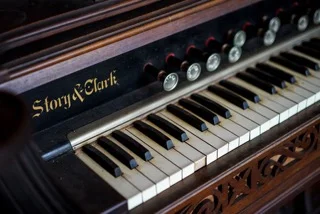In the mid-1970s, I was a scallop diver in and around North Haven and Vinalhaven. It was cold, exhausting, but ultimately rewarding work. One snowy December day, my partner and I managed to gather and shuck 104 lbs of delicious Penobscot Bay scallops that netted over $400, my best “catch” ever. But over the years, scallops became harder and harder to find. On good days, we were lucky to get 20 lbs. We dove less and less frequently because it wasn’t worth the time and effort.
Finally, I stopped scalloping altogether to focus on teaching, and then watched over the years as the scallop catch continued to decline and local fishermen, mostly draggers, turned to other fisheries. Many gave up their licenses. Eventually the season was shortened, catches limited, and areas closed – all in an effort to allow the scallop fishery to recover. Scallop licenses were frozen by the State, and today, many former scallop fishermen and fisherwomen can no longer legally catch scallops.
Yet, the hope is that scallops will again become an important part of the Maine fishing economy, especially with the prospect of a potential decline in the lobster catch as ocean temperatures warm and lobsters migrate north and east in the Gulf of Maine. What might take lobsters’ place? Could it be that delicious Maine scallops could at least supplement lobsters for Maine’s fishing communities?
Last month, I had a chance to accompany two of our scientists, Cait Cleaver and Phoebe Jekielek, out to Hurricane to check on our scallop aquaculture research sites in the anchorage there. Cait has been working for four years with the DMR and Muscle Ridge scallop draggers to find ways to restore the local fishery. Recently, she decided that we should consider growing scallops rather than just dragging for them in the wild.
It was a bitterly cold and breezy late fall morning, gray and overcast with snow in the forecast. We have several research scallop lines in the Hurricane anchorage, each with a frame carrying six trays of about 100 juvenile scallops. The frames sit on the bottom in about 30’ of water. Ten scallops in each tray have a numbered tag glued to their shells. Our task was to find and measure with a micrometer the ten tagged scallops in each tray, and then ten randomly selected scallops. We had to record the data – shell height (size), date, time, and water temperature - on pre-printed forms to be entered and compared with the previous month’s growth measurements. The scallops were then returned to their trays which were re-loaded into the frame and returned to the depths for another month.
The process took about three hours, dipping our bare hands into 44 degree seawater, picking out the scallops, carefully measuring them to hundredths of a centimeter, and writing down the information with a pencil held with frozen fingers. In 23 degree cold, sitting on a crate in the open stern of our boat, with little protection from the wind, it was a numbing experience. Remarkably, though, spirits remained high throughout, with hardly a complaint about the cold. There was a job to be done, the work of a field research scientist, and it had to be done with care and precision that couldn’t be compromised by haste or carelessness. We became so engrossed in our work that we hardly noticed the cold. Our conversation was about using our instruments, scallop size and growth, how scallops needed space and didn’t liked to be piled up like oysters, and of the Japanese technique of ‘ear hanging’ rather than using trays to grow scallops.
As a diver, I knew little about scallops except where I could find them, diving along the edges of the dragged areas and the rocky bottom where the draggers couldn’t go. I never gave much consideration to how fast they grew, what conditions were necessary for them to grow, or what might threaten their growth or survival. In spite of the evidence of their decline due to over-fishing, I assumed they’d recover somehow and always be around, part of the normal cycle of abundance and scarcity to which fisherman for centuries were accustomed (or resigned).
I had never been much of a science student in school. My experience with lectures and labs, and textbooks with terms in Latin, left me cold. My grades were poor. I had no interest or inclination to pursue a career in science. Yet, in the field, my interest was piqued, heightened. With a particular assignment to observe or gather or investigate, I viewed science entirely differently. That was my experience as a school principal who assisted occasionally the biology or geology teacher with a group assignment outdoors. That was my experience, too, measuring scallops on that cold day last month. Suddenly, I was interested in scallops as a species. I wanted to know more about various ways of growing scallops, about how and why scallops thrived in certain conditions and not others, about the economics and politics of scallop harvesting, and about what could be done to preserve and even grow the scallop fishery to help Maine’s maritime economy. For that brief moment, I became a field research scientist, and discovered I loved it.









